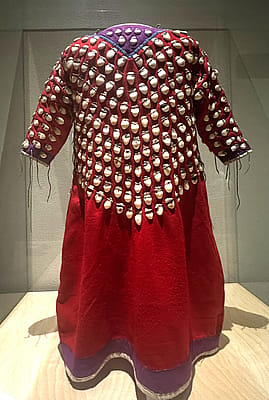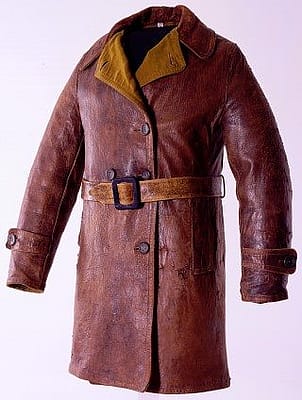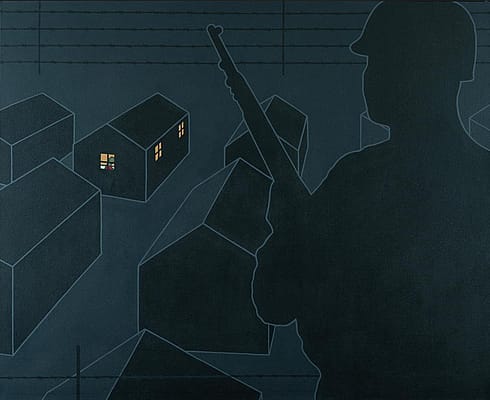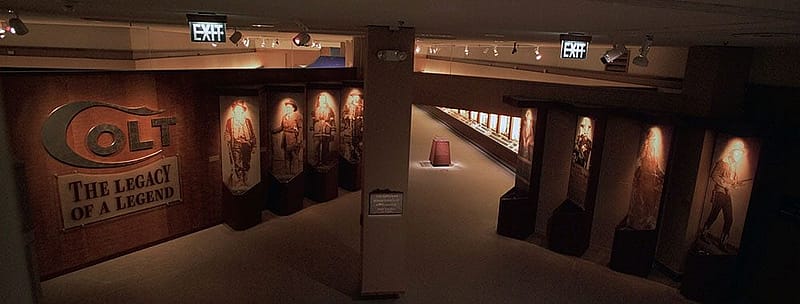
Colt: The Legacy of a Legend
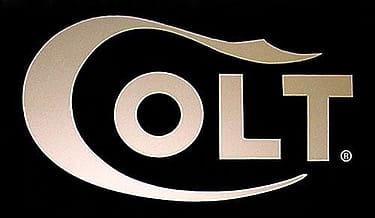
Past Exhibition
Colt: The Legacy of a Legend
A Special Exhibition of Colt Firearms and Memorabilia
May 16 – October 6, 2003
A past exhibition presented in conjunction with the Colt Collector’s Association and Colt’s Manufacturing Company, Inc., Colt: The Legacy of a Legend was the most historically significant exhibition of Colt firearms that had been presented in the previousone hundred years.
Samuel Colt (1814 – 1862) patented the first mass-produced multi-shot revolving firearms, thereby guaranteeing himself lasting fame as one of America’s most successful inventors and entrepreneurs. Colt’s standard revolvers were works of precision and reliability highly valued by soldiers and frontiersmen. His deluxe arms, made for exhibition or presentation, were appreciated for their masterfully engraved decoration.

Colt: The Legacy of a Legend was designed to appeal to all interest levels through its provocative explorations of the elements of technology, tradition, and culture that helped determine many of the prevailing characteristics of our contemporary society. The presentation consisted of an array of more than eight hundred firearms produced by the genius of Samuel Colt, his associates, and his successors. Intriguing visual, auditory, and sensory experiences aided the visitor in learning about the societal themes that moved through and beyond Colt’s industrial accomplishments in the Connecticut River Valley to influence numerous aspects of society.
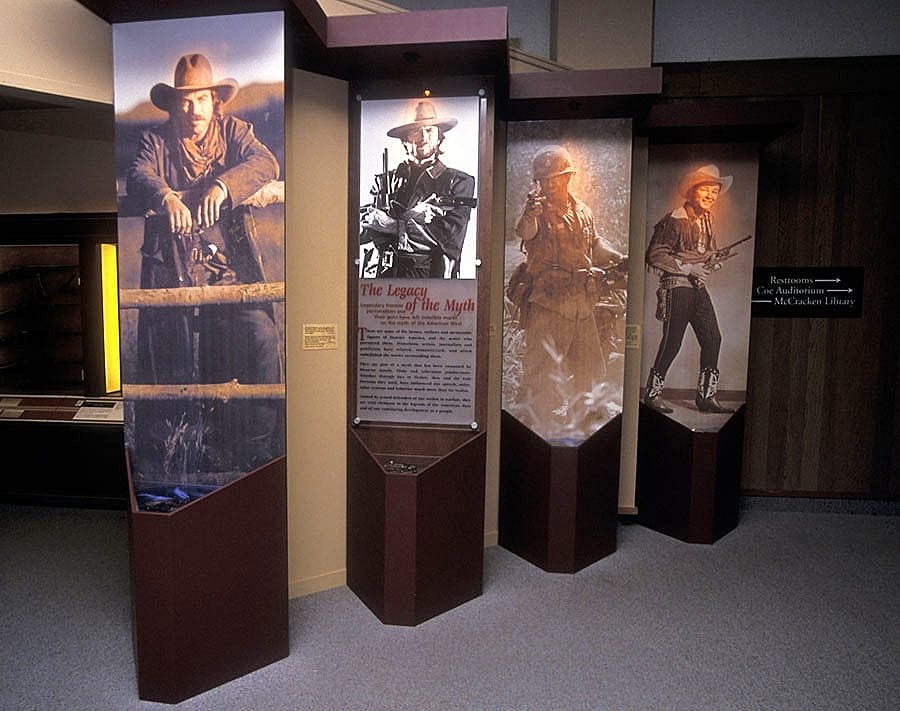
The voice and image of actor Tom Selleck welcomed visitors to a virtual gallery of legendary figures who left indelible marks on the “Myth of West.” The exhibition explored the legacy of the amazingly energetic life of Samuel Colt, who made his name and his guns enduring international legends in a relatively brief period of time. Many of the firearms featured were truly works of art, with metals engraved with beautiful scrollwork and geometric designs, handles of ivory and mother-of-pearl, and richly-grained wooden stocks enhanced by intricate checkering and elaborate hand carving. The exhibition also delved into collecting—as a universal phenomenon, and discussed its motivations, rewards, and benefits.
Computer interactives and video presentations demonstrated the differences between historic and modern firearms technology, and a station encouraged children (and adults!) to make their own rubbings of actual firearms engravings.
Colt: The Legacy of a Legend ended its run in the Special Exhibitions Gallery at the Buffalo Bill Center of the West on October 6, 2003. Enjoy the following excerpts from the exhibition.
The Legacy of a Legend: The Myth
Part of the myth is the man; another part of it is the gun. One man might be a killer; the other, his nemesis, a sheriff or a marshal. In the myth they are destined to meet in mortal conflict, often beneath a blazing sun, on the dusty main street of a little frontier town in the American West. The street is deserted, but there are people hiding in the wood frame stores, and shops, and in the saloon; hiding, and waiting, and watching, for the men to appear and play out their deadly roles in a drama of life and death. There is in these nervous watchers both hostility and homage. Hostility toward the killer born of pain and fear imposed upon them; homage for the lawman, born of admiration and hope. As if from nowhere, the killer and the lawman appear in the street. For a breathless minute they stand motionless, watching each other. Then with measured, resolute strides they begin to close the distance between them, spurs sounding quietly, boots slightly stirring the dust.
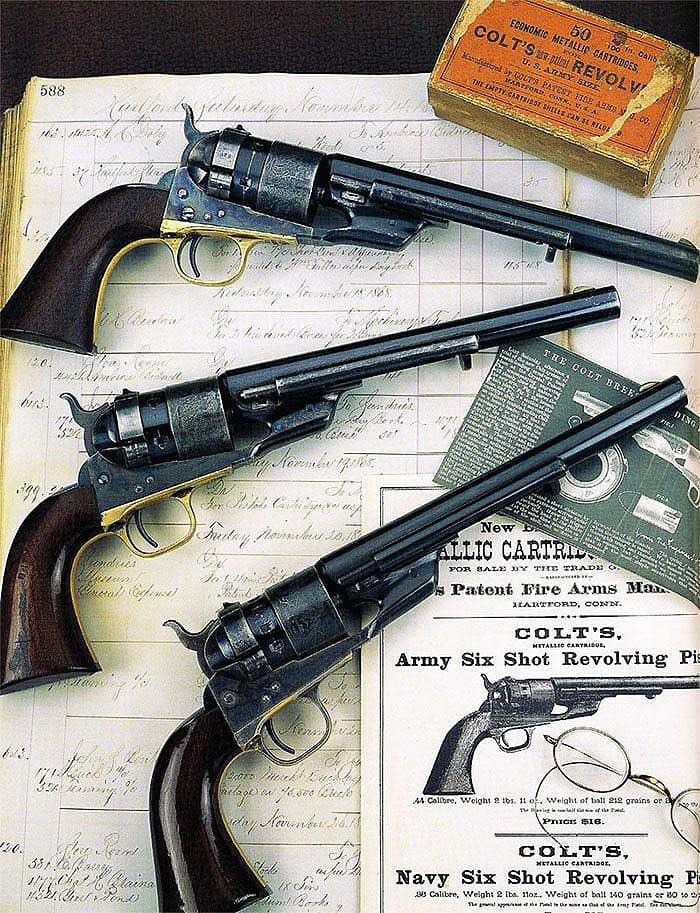
Gradually the other part of the myth, the gun, becomes apparent, and of urgent importance. The hands of the men hover near the burnished handles of their holstered pistols, gleaming in the bright sunlight. As if on cue, hands move with practiced quickness; the deafening roar of gunshots displaces all other sound; and, after a lingering moment of strained apprehension, the realization emerges—the lawman stands; the antagonist is fallen, dying in the dust. The gun in the myth, and in the hand of the victor, is a Colt Model 1873 Army revolver, a Peacemaker. The man and his gun have, indeed, brought peace back into the lives of the watchers, who slowly emerge from the frame buildings to affirm the victory of good over evil, the triumph of hope over fear.
The myth would come to have many facets and many faces. It would grow to include cowboys, “Indians,” rustlers, wagon trains, settlers, uniformed cavalry, Pony Express riders, Wells Fargo stagecoaches, gamblers, women sharpshooters, and cattle barons, as well as hundreds of stories of honor and dishonor, of courage and cowardice, of hope and fear. It would ultimately include many kinds of people and many makes and types of guns. And the myth would become an integral and substantial part of the fiber and the fabric of our nation—the incredible story of the development of the West.
The most pertinent question about the myth is, “Is it true, or is it merely fanciful distortion?” The actual answer is that it is both. The myth is legend and reality, just like the man and the gun. Some of the men were highly skilled and courageous gunfighters; others were cowardly and conniving imposters. Some of the guns were Colts; others were rifles and shotguns and a wide variety of military and commercial handguns. They all became a part of the myth in one way or another. Some were grounded in reality; the others were largely legendary, but even the legends were sometimes true, or partly the truth. Legend and reality. Both can be illuminating or illusory, without being either completely accurate or entirely false. The two are like the obverse sides of a coin, like different perspectives of the same sunset. They are inextricably intertwined in one of the most enthralling and exciting stories in human history.
The Legacy of a Legend: The Man
The man’s life was very short as compared to most—only 48 years in length. Those 48 years, however, were filled to overflowing with busy, bustling energy, with mechanical ingenuity, with persuasive salesmanship, and, ultimately, with international fame and acclaim. His name would come to be known throughout the world, and it remains among the best known of all names today, more than 140 years after his death. The name was Samuel Colt. The name, like the man himself, is truly a legend. The legacy of the legend consists of a succession of firearms of revolutionary design, of a remarkably innovative manufacturing empire, and of an astonishing role in both the mythological and historical development of a fledgling nation.
Samuel Colt became a legend primarily because of his lifelong fascination with firearms and the inventive genius with which he pursued that fascination. On a spring day in 1821, when he was a mere seven years old, concerned adults missed him and began a search to locate him. They were to find him sitting in the shade of a tree, not playing, but working, with a pistol. He had it completely disassembled, with its parts spread about him, and was beginning to restore it to its original configuration, which, to his great delight, he soon accomplished. At fifteen, in the course of his successful demonstration of the explosion of an underwater mine, he met one of America’s most brilliant young engineers, who would later become the production superintendent of Colt’s firearms factory. Within a year he had become a sailor in the ship Corvo, and, sometime during its 1830 – 1831 voyage, young Samuel developed the idea of a revolving handgun, and carved wooden models of its parts. He had certainly seen other revolving firearms in his travels to England and India, but the mechanisms he conceived were more than copies of any of them.
Always searching for ways to transform dreams into reality, at eighteen Sam Colt embarked on a four-year career as a showman, “Dr. Coult of Calcutta,” to finance the research and development of his guns through gunsmiths in Hartford, Albany, and Baltimore by presenting lectures on the purported benefits of “laughing gas” (nitrous oxide). These handcrafted prototypes were sometimes impractical and dangerous, but, through Colt’s incredible tenacity, they improved until patents for functional firearms were obtained in France and England in 1835, and in the United States on February 25, 1836. Within a month the Patent Arms Manufacturing Co. of Paterson, New Jersey, had been chartered, and the production of legends was shortly to begin—the “Baby” Paterson, the No. 2 and 3 Belt Models, the No. 5 Holster or Texas Paterson, the Ehlers, the Ring Lever Rifles, and the Model 1839 Carbines. The young Republic of Texas championed their virtues, acquiring more than five hundred of the various models, and using them in ways that immortalized them.
There would be disappointments and failures along the way, but the legend had been born and its growth could not be restrained. By 1850, Samuel Colt had the most prolific, and profitable, private armory in America, and, within five years, the finest one in the world. The man, and the firearms that enthralled him, would be instrumental in molding human events, and human imagination, for the remainder of time.
Colt Memorabilia
1830 – 2003
Since his fame as a firearms inventor, industrialist, and marketer was both legendary and international, objects that can be related directly to Samuel Colt are the most highly-prized of all Colt memorabilia. Although very scarce, examples of his family porcelain and silver services, pictures, letters, signatures, and calling cards have survived.
Any materials used in everyday business operations, as well as things produced for sale during the nineteenth century, such as lawnmowers, sewing machines, typesetters, and steam engines that bear inscriptions of the Colt armory are collected by “Coltiana” enthusiasts.
Following World War I, Bakelite came into vogue, and Colt made “Coltrock” or “Coltstone” products like cigarette boxes, thermos bottles, and electrical outlets. The tendency to discard such items as their usefulness declined actually increased the rarity and value of the things that remained. The last few decades have seen a proliferation of products designed specifically for collectors.
Colt Late-Nineteenth-Century Longarms
1900 – 2003
During the Civil War more than 75,000 Model 1861 Special Muskets were produced for the U.S. government. In 1866 many of these single shot muzzleloaders were converted to metallic cartridge rifles for Egypt. A subsequent Russian arms contract was filled with the Colt Berdan Single Shot Rifle, a true metallic cartridge longarm. These foreign sales enabled Colt to survive an economic depression that bankrupted many other firearms manufacturers.

The exposed hammer Model 1878 double barrel initiated entry into the highly competitive sporting shotgun market. A hammerless double barrel, the Model 1883, was soon added.
Colt produced both lever action (Colt-Burgess) and slide action (Colt Lightening) rifles, adding further diversity to the company’s firearms offerings.
Colt Semi-Automatic Pistols
1900 – 2003
The Colt’s Patent Fire Arms Manufacturing Company was the first maker of “automatic” pistols in the United States. It entered the field with the Model 1900, designed by John M. Browning.
The term “automatic” must be translated to semiautomatic to be correct, because, unlike fully-automatic firearms, the trigger must be pulled once for each round fired. The pistol will not fire multiple shots with the trigger depressed.
The Model 1900 was followed in rapid succession by the models of 1902, 1903, 1905, 1908, and the extremely rare models of 1909 and 1910. They were all surpassed by another Browning design, the Model 1911, and the later Model 1911A1, destined to become the most famous semiautomatic pistol in the world. In continuous production since 1911, the Colt .45 ACP (Automatic Colt Pistol) is unrivaled in the extent of its military, police, and civilian use.
The Favored Colt Model 1861 Navy
The Colt Model 1861 Navy revolver was a favorite firearm used during and after the Civil War. Between 1861 and 1873, a total of 38,843 were manufactured. Colt: The Legacy of a Legend featured the very first Model 1861, along with its holster.
This firearm bears both the serial number 1 and the manufacture date April 9, 1861—a Colt employee wrote the manufacture date “April.9.1861” in black ink on the walnut grip beneath the gripstrap of the firearm. The first of 38,843 Colt Model 1861 Navy revolvers, it is also one of only a hundred Colt Model 1861 Navy revolvers designed with a fluted cylinder. Instead of the standard Texas Naval scene engraved on the cylinder, one flute is stamped “PAT SEPT 10TH 1850.” The rest of the firearm resembles a standard issue Colt Navy revolver.
It was purchased along with the original holster, by Charles T. Sleight within a month of its manufacture date. During this time, Sleight enlisted to fight in the Civil War on behalf of the Union Army. He carried this firearm into battle—most notably at 2nd Bull Run—until he was discharged in 1862 for disability. This firearm set the standard for Colt production from 1861 to 1873.

The firearm has a case hardened frame (stamped “COLTS/PATENT”), hammer, and lever. The barrel is 7.5 inches long and stamped “ADDRESS COL SAML COLT NEW-YORK U.S. AMERICA.” The barrel, creeping style loading lever, and trigger was blued. As the first in a long line of Colt Model 1861 Navy revolvers, this gun set the standard for production from 1861 to 1873.
Written By
Nancy McClure
Nancy now does Grants & Foundations Relations for the Center of the West's Development Department, but was formerly the Content Producer for the Center's Public Relations Department, where her work included writing and updating website content, publicizing events, copy editing, working with images, and producing the e-newsletter Western Wire. Her current job is seeking and applying for funding from government grants and private foundations. In her spare time, Nancy enjoys photography, reading, flower gardening, and playing the flute.
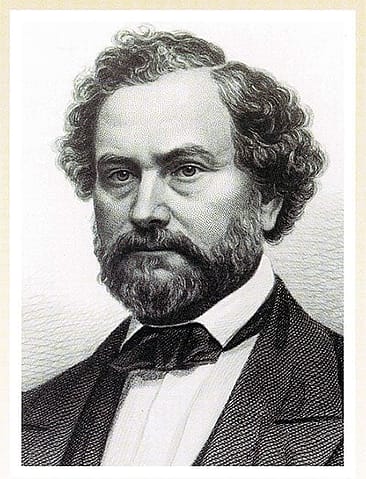
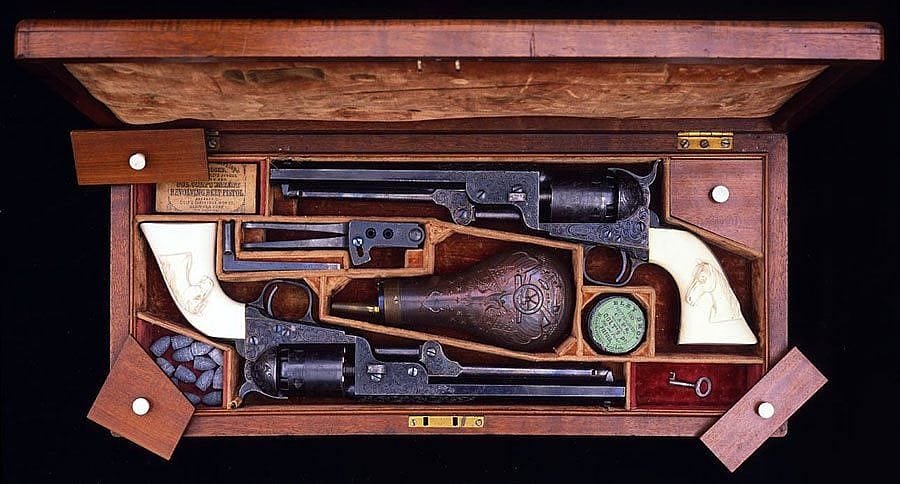
![Colt Model 1902 Sporting [Semi-]Automatic pistol, .38 caliber. 2012.9.1](https://centerofthewest.org/cdn-cgi/image/quality=80,scq=60,gravity=auto,sharpen=1,metadata=none,format=auto,onerror=redirect/wp-content/uploads/2015/10/2012.9.1-300x191.jpg)
